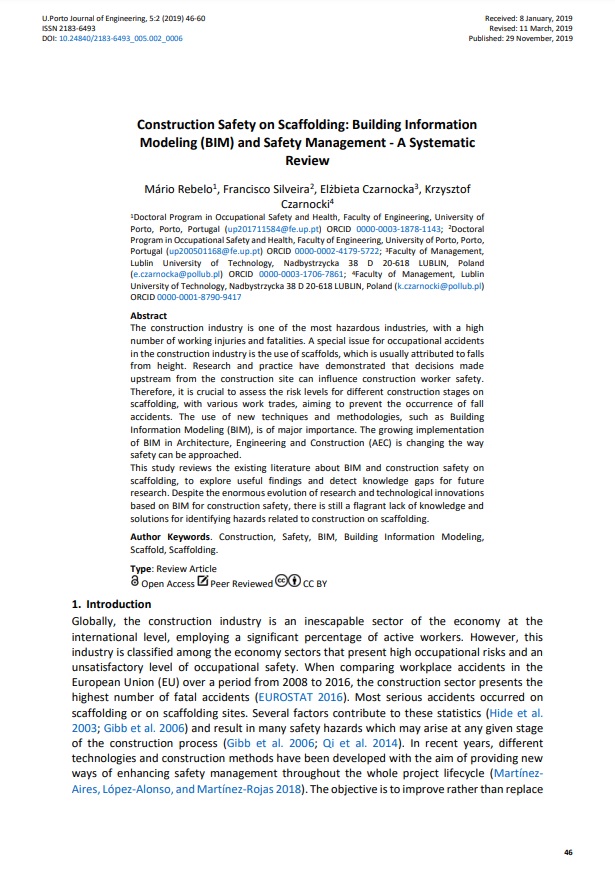Construction Safety on Scaffolding: Building Information Modeling (BIM) and Safety Management A Systematic Review
Main Article Content
Abstract
The construction industry is one of the most hazardous industries, with a high number of working injuries and fatalities. A special issue for occupational accidents in the construction industry is the use of scaffolds, which is usually attributed to falls from height. Research and practice have demonstrated that decisions made upstream from the construction site can influence construction worker safety. Therefore, it is crucial to assess the risk levels for different construction stages on scaffolding, with various work trades, aiming to prevent the occurrence of fall accidents. The use of new techniques and methodologies, such as Building Information Modeling (BIM), is of major importance. The growing implementation of BIM in Architecture, Engineering and Construction (AEC) is changing the way safety can be approached.
This study reviews the existing literature about BIM and construction safety on scaffolding, to explore useful findings and detect knowledge gaps for future research. Despite the enormous evolution of research and technological innovations based on BIM for construction safety, there is still a flagrant lack of knowledge and solutions for identifying hazards related to construction on scaffolding.
Downloads
Article Details
Authors who publish with this journal agree to the following terms:
- Authors retain copyright and grant the journal right of first publication with the work simultaneously licensed under a Creative Commons Attribution License that allows others to share the work with an acknowledgement of the work's authorship and initial publication in this journal.
- Authors grant the journal the rights to provide the article in all forms and media so the article can be used on the latest technology even after publication and ensure its long-term preservation.
- Authors are able to enter into separate, additional contractual arrangements for the non-exclusive distribution of the journal's published version of the work (e.g., post it to an institutional repository or publish it in a book), with an acknowledgement of its initial publication in this journal.
- Authors are permitted and encouraged to post their work online (e.g., in institutional repositories or on their website) prior to and during the submission process, as it can lead to productive exchanges, as well as earlier and greater citation of published work (See The Effect of Open Access).

